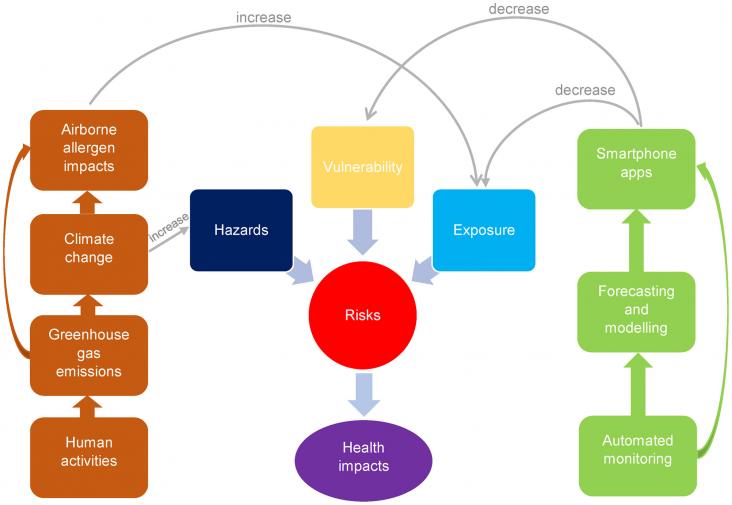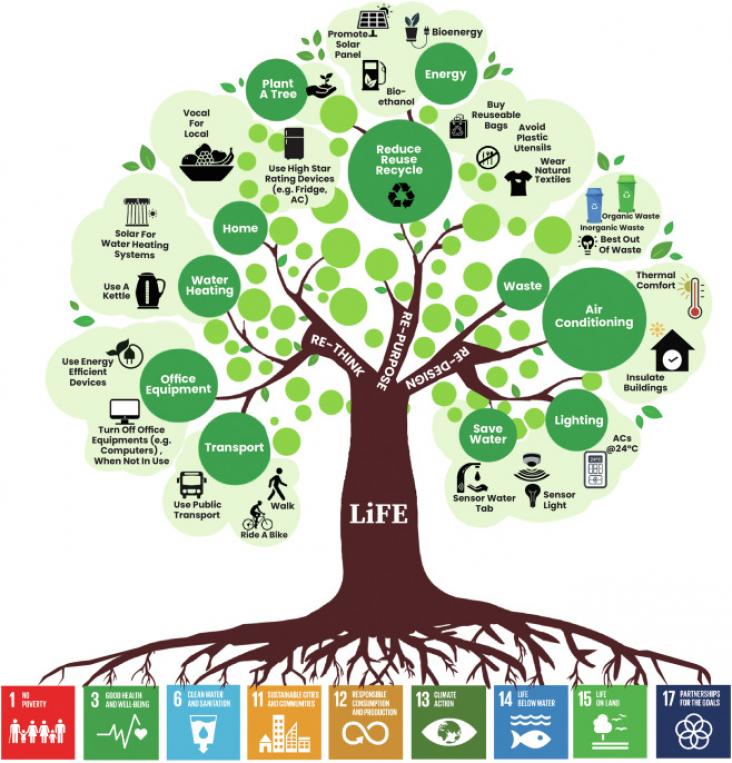
In November, 197 countries plus the European Union will convene in Baku, Azerbaijan for the 29th session of the Conference of the Parties to the United Nations Framework Convention on Climate Change or COP29. COP29 will bring together world leaders to assess global efforts to advance the Paris Agreement and limit global warming to 1.5°C.
The Lancet Regional Health - Western Pacific, Volume 51, October 2024
The Lancet Regional Health - Western Pacific, Volume 48, July 2024
The Lancet Child and Adolescent Health, Volume 8, July 2024
Current Developments in Nutrition, Volume 8, May 2024
Heliyon, Volume 10, 30 April 2024
The Lancet Regional Health - Western Pacific, Volume 40, November 2023
The Lancet Regional Health - Western Pacific, Volume 40, November 2023
Advances in Nutrition, Volume 14, May 2023
American Journal of Clinical Nutrition, Volume 117, February 2023
One Earth, Volume 7, 16 August 2024
One Earth, Volume 7, 16 August 2024
Ocean and Coastal Management, Volume 254, 1 August 2024
Ocean and Coastal Management, Volume 253, 1 July 2024
One Earth, Volume 7, 16 February 2024
Climate Change and Circular Economics: Human Society as a Closed Thermodynamic System, 2024, Pages 131-165
The content aligns with UN SDG 13 (Climate Action) by analyzing temperature and precipitation data to assess climate change risks, map hazard risks related to floods, droughts, snow, and freezing events, and calculate associated damage, while also indirectly supporting SDG 15 (Life on Land) by evaluating the impact on various regions and ecosystems.
Geothermal Power Generation, 2025, Pages 863-891
The chapter on geothermal resources in Kenya supports UN SDG 7 (Affordable and Clean Energy) by highlighting the country's rapid geothermal development driven by the utilization of its vast untapped geothermal resources, contributing towards sustainable energy production and addressing energy access challenges in the region.
Geothermal Power Generation, 2025, Pages 1-5
The content of Chapter 1, which provides an overview of geothermal resources, drilling, engineering, power generation, costs, and sustainability, aligns with various UN Sustainable Development Goals (SDGs), including SDG 7 (Affordable and Clean Energy) by promoting the utilization of geothermal energy for sustainable power generation and SDG 9 (Industry, Innovation, and Infrastructure) by fostering innovation and advancements in geothermal technology and infrastructure.
Resilient Futures
System Dynamics, Tech Innovations, and Climate Resilience
2025, Pages 113-134
This chapter ties into Sustainable Development Goal 13: Climate Action by focusing on the assessment and quantification of resilience to manage climate change risks and enhance adaptive capacity. By exploring methodologies, models, and real-world case studies, it provides valuable insights for stakeholders to effectively incorporate resilience metrics and climate change effects into research and policy.
Sustainable Development of Renewable Energy: Latest Advances Production, Storage, and Integration, Advances Renewable Energy Technologies, 2024, Pages 401-412
This chapter aligns with SDGs 7 (Affordable and Clean Energy) and 17 (Partnerships for the Goals) by highlighting the roles of smart grids, renewable energy communities, information, and digitization, requiring technological, research, and political collaboration, in advancing the energy transition.
The Climate Energy Nexus: Understanding the Relationship between Energy Production Systems and Climate Trends
2025, Pages 1-22
This chapter notably supports SDGs 7 (Affordable and Clean Energy), 12 (Responsible Consumption), and 13 (Climate Action) by helping readers to understand the interactions between energy consumption, emissions, and climate, and by introducing modeling approaches.
Technological Pathways for Africa' s Net-Zero Economy, Technology Solutions to Unlock Africa's Sustainable Future, 2025, Pages 217-235
This chapter advances Goal 13 by educating politicians, industry experts, and researchers on the significance of shifting toward sustainable energy solutions by offering a thorough examination of essential elements and discussing possible obstacles.
Metallic Mineral Resources: The Critical Components for a Sustainable Earth, 2024, Pages 409-434
The energy transition will require new technology for clean energy. Many of those technologies require the use of critical metals which are nonrenewable and must be used responsibly and sustainably.
Climate Crisis, Energy Violence, Mapping Fossil Energy' s Enduring Grasp on Our Precarious Future, 2024, Pages xvii-xlix
This chapter advances Goals 13 and 16 by discussing how the book demonstrates “textbook” cases of energy violence using an empirical approach highlighting (1) spatial and temporal evidence and (2) ecological and societal impacts across global and local scales, including frontline communities.
Safe and Sustainable Arctic Shipping Management and Development, 2024, Pages 151-160
This chapter advances Goals 13 and 9 by examining the effects of climate change and the relationship with the Arctic based on the perspective of professionals working on climate change and Arctic issues.
S.C. Onwubu, Z. Obiechefu, T.H. Mokhothu, Ajay Kumar Mishra, 17 - The environmental sustainability of biowaste in bioplastic production, Editor(s): Ajay Kumar Mishra, Chaudhery Mustansar Hussain, Bioplastics for Sustainability, Elsevier, 2024, Pages 407-428, ISBN 9780323951999
Rupali Jandrotia, Ipsa Gupta, Priyanka Mahajan, Daizy Rani Batish, Harminder Pal Singh, 2 - Green nanomaterials: an eco-friendly route for sustainable nanotechnology, Editor(s): Pardeep Singh, Puja Khare, Disha Mishra, Muhammad Bilal, Mika Sillanpää, In Micro and Nano Technologies, Nanotechnology and Nanomaterials in the Agri-Food Industries, Elsevier, 2024, Pages 21-52, ISBN 9780323996822
Energy Transport Infrastructure for a Decarbonized Economy, 2025, Pages 373-395
Hydroclimatic Extremes in the Middle East and North Africa Assessment, Attribution and Socioeconomic Impacts, 2024, Pages 343-366
Safeguarding Mountain Social-Ecological Systems, Vol 2
Building Transformative Resilience in Mountain Regions Worldwide
2024, Pages 201-206
Language and Communication, Volume 99, November 2024
Control Engineering Practice, Volume 151, October 2024
Advances in Nutrition, Volume 15, September 2024
The Lancet Oncology, Volume 25, June 2024
The Lancet Oncology, Volume 25, June 2024
Current Developments in Nutrition, Volume 8, June 2024
Quaternary Science Advances, Volume 14, June 2024
iScience, Volume 27, 15 March 2024
Current Developments in Nutrition, Volume 8, February 2024
American Journal of Clinical Nutrition, Volume 119, January 2024
Quaternary Science Advances, Volume 13, January 2024
The Lancet Regional Health - Southeast Asia, Volume 20, January 2024
iScience, Volume 26, 17 November 2023
Current Developments in Nutrition, Volume 7, November 2023
Quaternary Science Advances, Volume 12, October 2023
iScience, Volume 26, 15 September 2023
iScience, Volume 26, 15 September 2023
iScience, Volume 26, 18 August 2023
Nano Energy, Volume 110, 1 June 2023
Current Biology, Volume 33, 8 May 2023
iScience, Volume 26, 20 January 2023
Advances in Nutrition, Volume 14, January 2023
Advances in Nutrition, Volume 13, 1 May 2022
Energy Storage Materials, Volume 46, April 2022
Discourse, Context and Media, Volume 45, March 2022
Advances in Nutrition, Volume 13, 1 January 2022
Online Social Networks and Media, Volume 15, January 2020
Climate Change and Circular Economics, Elsevier, 2024, Pages 271-275
The content of the chapter aligns with UN SDG 7 (Affordable and Clean Energy) and SDG 13 (Climate Action) by discussing strategies to reduce greenhouse gas emissions, promote clean energy technologies, and address the impact of climate change through the adoption of sustainable energy solutions.
Advances in Sustainable Humidification-Dehumidification Thermal Desalination Systems, Elsevier, 2025, Pages 1-15,
The content ties to SDG 6 (Clean Water and Sanitation), SDG 7 (Affordable and Clean Energy), and SDG 13 (Climate Action) by discussing small-scale thermal desalination techniques using low-grade heat sources to ensure sustainable water management and supply, promote affordable and clean energy access, and reduce greenhouse gas emissions through energy-efficient solutions. Greenhouse gas emissions are lowered through the utilization of low-grade heat sources.
Evolution and Trends of Sustainable Approaches: Latest Development and Innovations in Science and Technology Applications, 2024, Pages 209-226
This chapter ties into Sustainable Development Goal 7, Sustainable Development Goal 9, and Sustainable Development Goal 13 by promoting the adoption of green hydrogen as a clean and sustainable energy source, emphasizing the development of decision support systems for designing hydrogen supply chains which involves innovation and the creation of new infrastructure, and addressing the environmental consequences of conventional energy sources by focusing on green hydrogen as a viable solution to mitigate climate change impacts.
Advances in Energy from Waste: Transformation Methods, Applications and Limitations Under Sustainability, Woodhead Advances in Pollution Research, 2024, Pages 503-524
Advances in Energy from Waste: Transformation Methods, Applications and Limitations Under Sustainability, Woodhead Advances in Pollution Research, 2024, Pages 225-279
The Lancet Oncology, Volume 25, June 2024
iScience, Volume 27, 20 September 2024
Progress in Materials Science, Volume 142, April 2024
Materials Letters, Volume 354, 1 January 2024
Materials Today Energy, Volume 32, March 2023
Heat Pipes (Seventh Edition), Butterworth-Heinemann, 2024, Pages 245-269
Supports the UN SDGs by enhancing energy efficiency, reducing energy consumption, and promoting the use of renewable energy sources. By improving heat transfer processes, these technologies help achieve SDG 7 (Affordable and Clean Energy) by increasing energy efficiency and reducing greenhouse gas emissions. Additionally, they contribute to SDG 9 (Industry, Innovation, and Infrastructure) by promoting innovation in energy-saving technologies and improving industrial processes to support sustainable development
Energy Transport Infrastructure for a Decarbonized Economy, 2025, Pages 329-372
Treatment and Utilization of Combustion and Incineration Residues, 2024, Pages 535-550
Quaternary Environments and Humans, Volume 2, Issue 3, June 2024, 100012
The study demonstrates that natural levee evolution in the central Kanto Plain is controlled by river migration and sea-level fluctuations, which are influenced by climate change, providing insights that can inform climate action.
Quaternary Environments and Humans, Volume 2, Issue 5, October 2024, 100016
Quaternary Environments and Humans, Volume 2, Issue 5, October 2024, 100023
The study of Laguna Bacalar's paleoecology during the Late Holocene provides important insights into how regional climate changes and sea level fluctuations have shaped the vegetation and ecosystems of this region, which can inform conservation efforts and climate adaptation strategies.
Nexus, Volume 1, Issue 2, June 2024
Transportation electrification is a critical step toward energy transition and a low-carbon society, with wide-ranging social and economic impacts. This study examines the significant role of the 2023 United Auto Workers strike in the context of transportation electrification, with a focus on its implications for the automotive industry and labor market dynamics.


